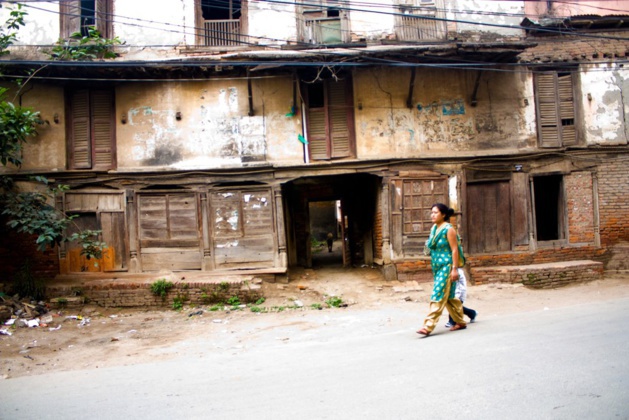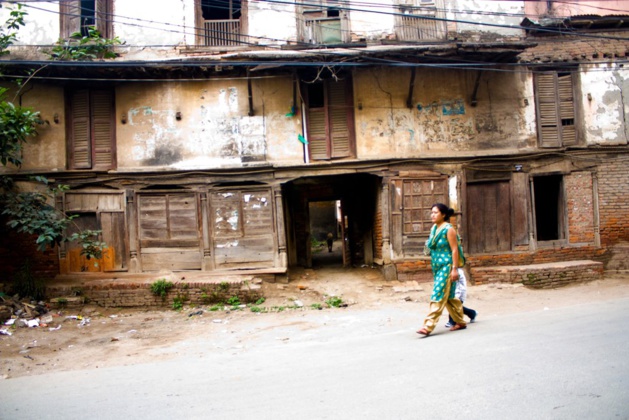
Credit : RR
The contemporary Nepalese society is anchored in patriarchal conceptions of the relationship between man and woman. The disparity in the attribution of the power between the sexes marks society, which places women under male domination, passing from the authority of the father to the husband. Within these spheres, family, marital and social, the tradition has become a standard, which determines the role and the position of the woman. While her duties are predefined by the social hierarchy, by subdivision of the society in castes, and by the weight of the traditions, her rights remain limited by the male authority.
Patriarchal and misogynous society
The most striking example is the attribution of citizenship. In the young Republic of Nepal, a woman becomes a citizen only if her father or husband authorizes it. Thus nothing grants her autonomy, as, alone, she is given no recognition. This lack of consideration takes the shape of rejection of women as such. The female condition in itself makes her impure for community life during her menstruations or after childbirth, which leads to her being temporarily excluded from the family home.
We can also note that the legalization of the termination of pregnancy in 2010 led to selective abortion of the girls. This ordinary misogyny shows itself all the more through the importance of the violence of which the Nepalese are victims. According to the journalist Marie Dorigny, 99 % of men believe that women have to obey them, and 66 % of Nepalese girls and women declare themselves victims of physical or verbal violence, attacks or sexual harassments.
With 25.2 % of the population living below the poverty line and an Indication of human Development (IDH) of 157 out of 187 countries, Nepal is among the poorest countries in the world. The State is dependent on international assistance to meet the needs of its population. It has difficulty in establishing a stable political and economic climate because the weakness of the Nepalese economy includes a deficiency regarding political stability. Weakened by a ten-year civil war, the Nepalese State is still in phase of political normalization. Quite logically, precariousness and unemployment led to a deterioration of the living standards of the inhabitants.
Precariousness, dependence and obedience
The tendency for violence is not only due to abuses of males, because the belief in witchcraft amplifies the phenomenon and sentences every woman suspected of witchcraft to death by burning. The patriarchal tradition thus became a pretext in the trivialized use of violence against women. It justifies every type of excess. The situation since 2010 has been this; the main cause of death of women between 15 and 49 years is suicide. An "extreme solution", which sadly resembles a headlong rush to break the isolation imposed by the law of the patriarchy. Once married, often forced to and often minor, a single woman cannot return to her parents. She must obey her husband and stay by his side, even just for financial reasons.
First victims of unemployment and poverty
To break the vicious circle of poverty and hunger, there are many men who decide to migrate to India. These departures emphasize the solitude of the women in a man’s world, and leave them with the responsibility of feeding the whole family. Without financial means, little educated, the women alone cannot meet their needs. Thus the autonomy of the women is one of the present priorities of the NGO on the ground. It is by allowing female literacy, access to healthcare medical and in the refuges that the women will benefit in safety and in autonomy. Behind this question is the key of a sustainable development centered on the role of the women in society, education and the generalization of the care.
Therefore, the state instituted a police department specializing in violence against women. However, few of them are lodging complaints by fear of being rejected. The weight of tradition prevents women from reaching education and defending human rights. In this respect, the national plan of action of the UNESCO for Nepal sets the question of gender equality in education as a national goal. But, the recent events in Nepal seem to be slowing down this process.
At the heart of current events, Nepal counts more than 8 000 victims after the earthquake on the 25th of April, with a 7.9 magnitude. Today, the priorities are focused on the reconstruction of the country and the guarantee of a minimum of sanitary security. On the ground NGOs (non-governmental organizations) aim to place women in safe places. If under normal circumstances the work of non-governmental organizations is partially dedicated to the fight against discrimination of gender, today their focus in on the decrease of the risks created by the earthquake.
The networks of organ trafficking and prostitution developed following the earthquake. The disaster emphasizes the precariousness, the insecurity, the isolation of women and girls, who, without roofs, financial income and future, are considered easy targets. According to Stéphanie Selle, manager of the French NGO Planet Children, between 10 000 and 15 000 women are sold or removed to keep the traffic going. It’s an unstable situation that worries the authorities. Aware of the risks, the State has committed itself to protecting the vulnerable populations. Security agencies and police are deployed on the borders to avoid trafficking and kidnappings.
This help is welcomed in the civil society, which also works to improve the living conditions of women by bringing medical care, assistance and food. But the NGOs have a hard time reaching the regions near the mountains and those close to the epicentre of the earthquake, zones inhabited mostly by women and children. Therefore the population there is lacking all outside help.




























